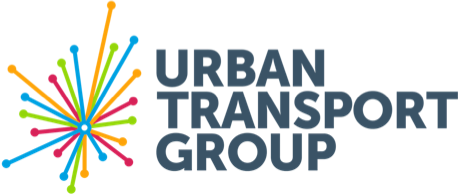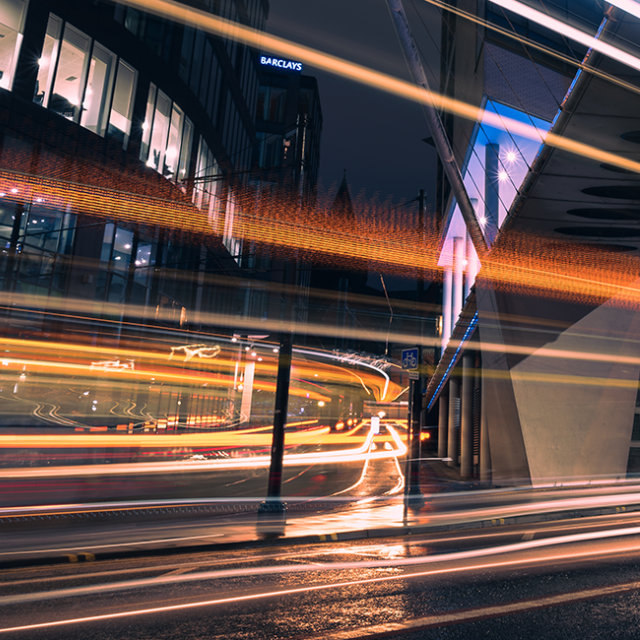Inside track - The state of transport 2024
Get the ‘inside track’ on transport trends over the last decade.
Our report explains what they are, why they are happening and what they mean for transport in city regions.
Over the past 10 years we have lived through a rapidly changing political, economic and social environment. This is particularly true of the period from 2020 when Covid-19 emerged and became one of the most globally disruptive peacetime events in recent history. The pandemic and the current cost-of-living crisis have caused major shifts in how, why, and when people travel.
Although patronage has returned well since the low of 2020, it is important to remember that public transport networks were already in decline. This report focuses on population, economic and travel trends over the previous decade and how these have played out in the city regions.
This report aims to give readers the ‘inside track’ into those trends – to not only show what they are, but to also explain why they are happening and what they might mean for cities and transport within them.
Far from simply being a report about how many people take buses or ride bikes, Inside track attempts to delve deeper to look at the social value of why people make trips - whether it’s commuting to work or travelling to school. It also seeks to show how macro trends, from population and economy, to devolution, might impact upon transport, and how these are playing out across city regions and nationally.
Population, economy and devolution
The city regions are the population and economic powerhouse of the country, home to one in three people and a significant proportion of the national economy. However, they are experiencing below average growth in GVA per person. If current trends are to continue, the majority of the city regions will fall further behind the national GVA average, with only Greater Manchester and London matching or surpassing the national performance.
Public transport, walking and cycling play a key role in connecting people with opportunities, enabling economic growth without the associated congestion. Our city regions have poor connectivity when compared to cities of similar sizes across Europe and this has been shown to negatively impact and hamper their productivity.
Investment in connectivity is one part of the puzzle that we must solve if we are to level up our city regions and unlock their full potential.
As of February 2024, devolution deals containing some level of transport powers have been agreed with nineteen areas, although seven of these still require local and parliamentary ratification.
Changing travel patterns in a post-pandemic world
Travel trends have been relatively stable for much of the last 10 years, with a gradual increase in trips before the Covid-19 pandemic. Travel was slowly changing, as trends such as working from home and online shopping changed our reasons and frequency of travel. However, the disruption of Covid-19 and the restrictions on social mobility appear to have fast tracked these trends, contributing towards a significant decline in trip numbers.
Although it is likely that the recovery from Covid-19 is still on-going, although at a much slower rate than in the initial years, these trends will make it difficult for public transport to reach its pre-pandemic trip numbers.
The impact of these social and economic shifts has not been felt evenly across all transport modes. The following sections explore the impact of these changes by mode. Given that each mode plays a different role in local transport networks, it is likely that the changes in our travel habits will play out differently.
Bus
As the most used form of public transport, the bus continues to play a vital role in connecting people with opportunities. However, patronage has been in long term decline and services are disappearing. Vehicle miles have continued to fall following the Covid-19 pandemic, despite patronage increases in the last year. The removal of unprofitable services reduces the frequency of some routes and removes others completely, with limited local authority budgets increasingly unable to fill the gaps. The loss of network coverage presents a real barrier to accessing services and opportunities, which must be overcome if we are to level up the economy.
Rail
Both heavy and light rail had seen strong patronage growth at the start of the last decade, which was subsequently disrupted by the Covid-19 pandemic. Their strength of moving large numbers of people from the suburbs to the city centre made them very popular modes for commuters and vital for allowing our city region economies to function.
However, the reduction in the number of commuting trips and cuts to service levels mean that it will be difficult for the patronage recovery to reach pre-pandemic levels. This is especially challenging for light rail, which has traditionally received no operating (revenue) subsidy from central government and has also used net revenues to part fund extensions and renewals. This situation has been made worse by extremely high levels of cost inflation (particularly energy costs), which has further impacted on net revenues.
Active travel
Active travel is a key part of our city region transport networks, both as modes of their own, but also as part of a trip involving wider transport modes. Walking and cycling levels have both increased over the past decade but are yet to reach their pre-pandemic levels. If we are to achieve wider goals around levelling up and decarbonisation, active travel modes must play their full role in providing people with cheap, accessible, and easy access to opportunities.
Car and van
The car remains king when it comes to making trips. Although trip numbers did reduce through the Covid-19 pandemic, they did not fall as far as other modes and have recovered faster. Many places are now reporting that traffic levels and the associated congestion have reached pre-pandemic levels, despite overall trip numbers still being supressed.
The report lays bare the precarious state of public transport in England’s city regions and the country as a whole - fewer people are travelling compared to a decade ago and the car still heavily dominates how people move.
While the report exposes major challenges for transport, there are seeds of optimism around the recovery from the pandemic and the acceleration of devolution and, with it, greater transport powers for local areas.
Now is the time to lock in the recovery for the long-term by providing greater clarity and certainty over funding, and truly recognising the value that public transport brings to our communities and local places.


